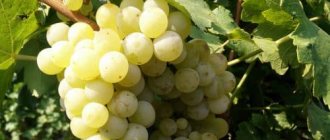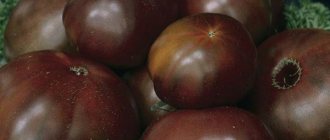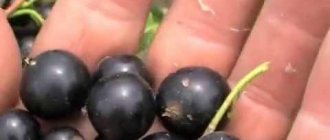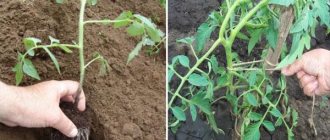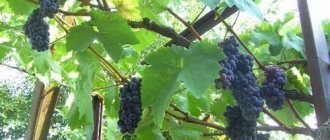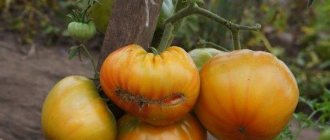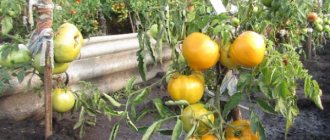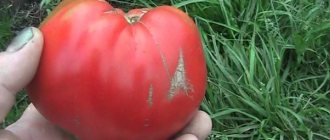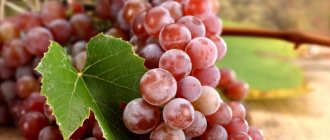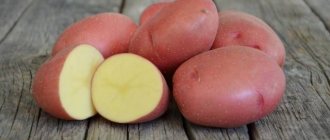Geography of the variety
The variety was bred at VNIIS named after. I.V. Michurina. The originators of the variety are K.D. Sergeeva and T.V. Zvyagina. The varieties Minai Shmyrev and Bredtorp were used as sources. The first variety was chosen as the parent plant for its high resistance to bud mite, frost resistance and high rates of self-fertility, the second - for its resistance to powdery mildew.
The resulting culture inherited all the qualities of the first source, but its resistance to powdery mildew was insufficient. In this regard, the Black Pearl was not zoned in the southern regions, where the percentage of damage to this disease is much higher than in other regions.
But with proper care aimed at reducing the risk of spreading the disease, it takes root and bears fruit quite normally in a warm climate. The culture was added to the state register in 1992. It is recommended for cultivation in the Central Black Earth, North Caucasus, Middle Volga, Ural, West and East Siberian regions.
Did you know? According to the botanical classification, the closest relative of the currant is the gooseberry.
Advantages and disadvantages of growing on site
The Black Pearl variety has become the basis for the breeding of many improved species. The variety itself is still popular due to its main advantages:
- high winter hardiness;
- resistance to most diseases to which the crop is susceptible;
- berries are prone to long-term storage and transportation;
- stability of fruiting.
The disadvantages of the variety are considered to be a weak currant aroma of berries and a sour taste due to the high content of vitamin C.
Botanical description
External features of culture:
- the root system of plants does not have a main stem, the bulk of the root shoots are located at a depth of 0–60 cm, but this does not prevent standard loosening procedures from being carried out, since they are restored very quickly;
- the bush is not tall, up to 1.3 m in height, spreading;
- young shoots are flexible and greenish, old shoots are woody and yellowish-brown;
- the foliage of the bushes is weak;
- leaf blades are five-lobed, acute-angled, painted bright green;
- flower clusters are formed in the leaf axils of two-year-old shoots and consist of 5–8 bell-shaped flowers with double perianths;
- The berries are black, shiny, even slightly golden, tightly held on the petioles.
Description and features of Black Pearl currant
Black pearls received recognition for several reasons. In addition to its taste characteristics, the variety has become one of the few that can adapt to any growth conditions and also bear fruit stably.
Bushes
The bushes stretch up to 1.3 meters. From 5 to 8 fruits appear on one brush at the same time. Leaf formation is characterized as average, which facilitates access to the sun and also increases fruiting rates.
Berries
Fruiting begins in the 2nd year of existence. The peak occurs 5-6 years after planting. In one place, currants can stably bear fruit for about 10-15 years.
| Color | Black, glossy. The fruits have a thick skin. |
| Size | From 1.5 to 3 grams. On one bush, fruits of approximately equal size most often ripen. Milling rarely occurs. |
| Taste, tasting assessment | Sourish-sweet taste, with a tasting score of 4.2 points. |
| Shatterability | The fruits do not fall off after ripening and do not bake in the sun. |
| Breakaway | When fully ripe, they come off well, leaving no marks on the petiole. |
| Ripening time | Mid to late July. |
From one adult bush, subject to the rules of care, you get from 3 to 4 kilograms of berries. This indicator is considered average, but the lack of volume is compensated by the simultaneous ripening and almost identical size of each fruit.
Transportation and storage of crops
Due to the thickness of the skin, the berries are well stored and can withstand long-term transportation. Due to its tight attachment to the petiole, this variety is suitable for mechanized collection. The harvest is suitable for various types of processing. Preserves, jams, compotes, liqueurs, and fruit drinks are prepared from the fruits of this variety.
Disease resistance
Black pearls are known for their high resistance to diseases that affect the culture. With timely spring treatment, the bushes are not affected by anthracnose, which is especially dangerous for currants. Powdery mildew can develop on bushes if planting or watering conditions are disturbed.
See also
Description and characteristics of black currant variety Selechenskaya, planting and care
Read
Winter hardiness and drought resistance
Cultivation in different regions of the country is due to the high qualities of frost and winter hardiness. Adult bushes tolerate frosts down to -35 degrees, provided additional shelter is provided.
Characteristic
When cultivating currants, it is very important to take into account its main characteristics. Based on this information, you can make lists of pros and cons in order to build on them when organizing work and preventive measures on the site.
Drought resistance, frost resistance
The bushes tolerate frosts well down to -35°C without shelter . Due to the fact that currant rhizomes are located close to the soil surface, drought resistance is low. Given this feature, during cultivation you need to pay more attention to watering.
Landing Features
Before planting, taking into account all the botanical features and characteristics of the crop, you need to:
- determine the timing of planting so that the vegetation quickly takes root in the new place;
- choose a suitable landing site;
- buy quality seedlings.
Deadlines
Planting can be done in the spring, before the buds swell, or in the fall, while the air temperature is at +10°C (late September - early October). But more often they carry out planting work in the autumn.
Before frost, the vegetation has time to take root well, and then in July next year it will be possible to harvest the first fruits. When planting in spring, the first harvest can be expected by next year.
Conditions
For full development and high-quality fruiting, the currant bushes of the variety in question need certain conditions:
Check out
Where to plant currants - in the shade or in the sun?
- abundant lighting;
- no draft;
- the soil is loose, with a highly nutritious base, mainly consisting of organic matter, with a slightly acidic reaction within the range of 5–7 pH;
- the location of groundwater is no closer than 1.5 m.
The site must be prepared in advance, approximately 4–5 months before planting. At the initial stage, deep aeration of the soil is carried out (at least 40 cm). Immediately after this, disinfect the area using a 5% concentration of copper sulfate solution, using 1 liter of liquid for every 10 m².
A week later, they contribute to each square. m 20 kg of manure, 10 kg of sand (not applied on sandy loam), 10 kg of peat. If the soil acidity is too high, then compost or humus is used instead of fresh manure, and 400 wood ash is added per square meter. m.
Choosing a suitable location
Taking into account all the conditions described above, the ideal place on the site for currants will be the south-eastern or southern side of the site, protected from drafts from the north. Currants can be planted at a distance of 3 m from the fence or outbuilding.
Important! The place where currants grow needs to be changed every 10–12 years.
Selection and preparation of seedlings
It is best to purchase planting material at special sales points in the fall; during this period the widest range of different vegetation is available.
A healthy seedling must meet the following characteristics:
- shoots - at least 2 pcs. 25–35 cm long, with several powerful buds on each;
- rhizome - well developed, fibrous type, gray uniform color, without damage, mold or other defects.
This is what good planting material looks like:
The day before planting, seedlings begin to be prepared. They are inspected and dried roots are cut off if necessary. Then the rhizome is immersed in a growth accelerator solution for 12 hours. You can use “Kornevin” for this purpose - add 1 tsp to 1 liter of water. powder product.
Landing algorithm
The holes need to be dug a week before planting. They are placed at a distance of 1.5 m from each other. A step of 2–2.5 m is left between the rows. The size of the holes is 40x50x50 cm. The top 20 cm of soil from each hole is mixed with 10 kg of compost and 20 g of superphosphate. Fill the hole 1/3 with fertile substrate and add 10 liters of water.
Read more about the features of planting currants in open ground.
Step by step landing:
- A mound is formed in the central part of the pit.
- The root of the seedling is placed on it and carefully straightened around the entire perimeter.
- The seedling is leveled along the bark neck and, after filling the hole with soil, it should be buried 6–8 cm.
- Sprinkle the roots with nutritious soil, shaking the plant a little so that voids do not form.
- The tree trunk circle is compacted and 10 liters of water are poured.
- The soil around the bushes is mulched with compost to a height of 5 cm.
Agricultural technology
Despite the unpretentiousness of the Black Pearl currant variety, you need to adhere to some rules of agricultural technology and take into account its features. The strength, productivity and resistance of the plant to diseases depends on this.
Landing dates
You can plant berry bushes throughout the growing season.
For autumn, this is the end of September or the first days of October. In order for the currants to have time to take root and gain strength before the onset of frost, the air temperature during planting should not fall below +100C. Then in July it will be possible to harvest the first small harvest.
In spring, it is recommended to plant the shrub before the buds swell. Throughout the first year it will grow and strengthen. The first currant fruits can only be tasted in the second year. In this case, you can remove no more than 2 kg of berries from one plant.
Leather sofa - review of modern and elegant sofas in a modern interior (115 photos and videos)
Site selection and preparation
In order for the Black Pearl bush to feel comfortable and develop quickly, you need to allocate a suitable place for it:
- It should be sunny and open, but away from strong winds. Currants do not like shade and cramped conditions, so the branches of the bushes should grow freely.
- The crop grows best in nutritious, loose and slightly acidic soil.
- A slightly moist area is suitable for the plant. Water stagnation and drought should not be allowed.
If currants grow in the shade and receive insufficient water, their fruits will become very sour and noticeably smaller.
A couple of months before planting the seedling, the area chosen for it must be cleared of weeds and roots. The soil must be dug to a depth of 50 cm so that it is loose and easily allows water and air to pass through. If the soil is poor, it is recommended to add 1 bucket of humus or compost under each root. Some gardeners also add potassium fertilizers and superphosphate. If planting is planned in the spring, all work should be carried out in the fall.
Care
Basic measures for caring for plants:
- Watering - once a week, 2 buckets of water per bush.
- Loosening the soil using a mild sap - once a month to a depth of no more than 5 cm.
- Mulching with compost - after each loosening.
- Feeding - from the 3rd year of plant life on the site. In the spring, for each plant, 2 liters of mullein are diluted in 10 liters of water; in the fall, 30 g of superphosphate and 20 g of potassium salt are added to 10 liters of water.
- Pruning - every spring and autumn, dry, mechanically damaged branches are removed. From the 4th year of life of plants on the site, in the spring they begin to remove all three-year-old shoots. Immediately after pruning, the wound surfaces are dusted with wood ash and covered with garden pitch.
Preparing for winter
There is no need to cover this variety of currants for the winter. The main thing is to carry out pre-winter preparation to protect the root system from freezing . To do this, at the end of September - beginning of October, moisture-recharging irrigation is carried out, adding 30 liters per square meter. m. After a day, loosen the soil and sprinkle it with compost to a height of 10 cm.
Important! If water-recharging irrigation is scheduled according to the schedule, and the weather is rainy outside, then this event should be abandoned.
Wintering
The Black Pearl currant has high winter hardiness. The bushes are quite resistant to frosts of -35 degrees. However, in the first year of life, it is important to cover young sprouts for the winter to protect them from freezing, covering the bushes with 15 cm of soil. With the first snow, you can compact the soil around the circumference of the bushes and lay agrofibre.
Reproduction methods
Currants can be propagated by woody cuttings. Harvesting planting material can be combined with spring pruning. Select well-ripened, one-year-old, woody shoots with a diameter of 10 mm with several strong buds.
They are cut into cuttings 15 cm long. There should be 3 buds on each cutting. A separate place is allocated for them on the site; they are planted at an angle of 45° at a distance of 30 cm from each other.
The soil is carefully mulched with compost and a temporary shelter is built over the plantings. It can be removed after the first sheets appear. Watering and mulching are carried out throughout the season. Next spring, ready-made seedlings can be planted in the prepared area.
The second method is dividing the bush. It can be used during the period of changing the place for currants. A ten-year-old plant is dug up, then divided and planted in a new place.
Did you know? 30 blackcurrant berries contain the daily requirement of vitamin C needed by an adult.
Diseases and pests
Among the diseases this variety is characterized by is powdery mildew. When the first symptoms appear, you need to immediately remove all affected areas and adjust the watering regime. If the soil is too wet, it is advisable to completely remove the mulch layer and fill the tree trunk circles with sand mixed 1:1 with peat.
After this, spray with the Fitosporin solution according to the instructions. At the end and beginning of the season, a 1% concentration of copper sulfate solution is used as a preventative measure. They are sprayed on vegetation and soil.
Among the pests, aphids, spider mites or sawflies can settle on the currant of the variety in question. To get rid of them, you can dust the leaves and soil with tobacco dust or wood ash.
To prevent the proliferation of pests, a 1% concentration of copper sulfate solution is also used in spring and autumn. If all the rules of agricultural technology are followed, then problems with parasites and diseases do not arise.
Read more about how to deal with blackcurrant diseases and pests.
Harvesting and storage
Harvesting is carried out after its complete ripening in mid-July. The brushes are cut using sharp scissors. Place in small containers. Store at a temperature of +2...+6°C in dark, well-ventilated areas. In such conditions, the crop retains its freshness for 4–5 days.
To increase shelf life, berries are frozen or sent for processing. They make delicious compotes, liqueurs, jams, and other winter dessert preparations.
The Black Pearl currant variety has many advantages, thanks to which it remains popular among farmers. If all the rules of agricultural technology are observed, the vegetation is rarely affected by diseases and pests and produces a good harvest with high-quality commercial characteristics.
Reviews from gardeners
Anna, 25 years old, Voronezh
A wonderful variety that deserves attention. Black pearls are resistant to frost and require minimal care. The berries are very sweet, which is important for me, since I do not like sour currants. I bake cakes to order and always add it to the filling, everyone really likes it.
Oleg, 53 years old, Ufa
I bought a couple of Black Pearl currant seedlings because I liked the name. And I didn’t regret it, it completely justifies itself. The berries are large and shiny, looking like black beads. The variety is unpretentious and brought a good harvest even in sunny and rainy summers.
Svetlana, 35 years old, Samara
The Black Pearl currant variety is one of my favorite and proven ones. Ripe fruits can remain on the bush for a long time, turning into raisins over time. The berries are not very large, but juicy and sweet.
